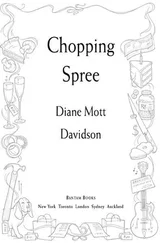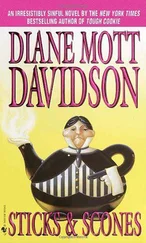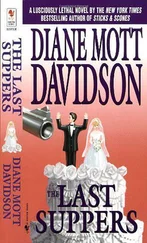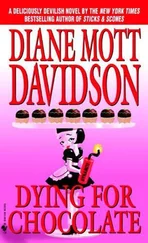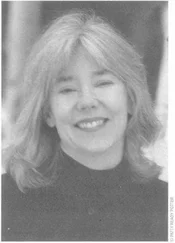I peered at the pictures of Tony. He wore an unzipped rain jacket, and under it, a sweatshirt with “University of ,” but I couldn’t see the rest. It didn’t look as if he had the white monogrammed shirt on underneath the sweatshirt, but it was hard to tell with the fading light and the rain.
The next-to-last photo of the batch was a zoom-in on Marla and Tony’s faces. Tony seemed to be laughing at something Marla had said. Marla, with a look of intense irritation, was staring straight at the camera. In the last picture, Tony had reached over to hug Marla, a movement that exposed his right forearm and wrist. A glimmer of light had caught the movement on film.
He was wearing a gold watch.
15
As I exceeded the speed limits on my way to the state archives, I tried to convince myself that Tony was a rich enough dude to have two watches. But why would he have told Marla not to wear her own timepiece? Maybe it was just an issue of psychological control. He wanted to be the one telling time. Having been married to a doctor dedicated to psychological control, I knew the telltale signs.
Still, I thought as I accelerated the van toward downtown Denver, the fact that Tony was wearing a gold watch at the campsite made things look doubly bad for Marla. I was glad that I, and not the police, had Macguire’s photographs.
I parked in front of the dull-looking government building, pushed through the vaultlike door to the basement archives, turned a corner, and arrived in a large, well-lit room with two desks, several long tables, a couple of rooms with microfilm machines, and row upon row of stacks. The smiling, frizzy-haired woman identified herself as the archivist. She asked me for three dollars for file retrieval of records for the Eurydice Gold Mine in Clear Creek County, then gave me a puzzled look.
“Goodness,” she trilled, “you’re not who I thought, you were. You sounded just like someone else on the phone. So friendly! But so much in a hurry!”
“Victoria Lear’s my friend,” I lied. “I know she’s very thorough, but always quite rushed. A good businesswoman, though, don’t you think?”
“I suppose,” the archivist replied noncommittally, as another patron had shown up at the desk. I knew questions concerning Victoria Lear’s visits to the archives would be fruitless. Colorado librarians take patron confidentiality as seriously as priests do the seal of confession. The frizzy-haired librarian directed me to sit at one of the long tables, and I acquiesced. At least I had received a vital piece of information: Victoria had been here.
When the archivist brought me the legal-length file with its typed tab: EURYDICE-CLEAR CREEK, I felt a wave of panic. What was I looking for, and how would I know it when I found it? Could I see what Victoria had seen? A grandfather clock standing by a near wall said two o’clock. I ordered myself to get going.
Something related to World War II. That was what the argument between Victoria and someone at Prospect had been about. I flipped to the beginning of the file and perused an inspection report from 1915: At present the work is confined to driving a crosscut to cut the Jack vein. I read another from 1918: I secured the samples you asked for and will bring them to Denver tomorrow. In 1922, the mine produced 161.8 tons of gold ore, and employed ten people. In 1930 an inspector indicated the character of ore as Gold, Silver, Lead, Zinc. In 1931, a new inspector noted that there was No fire protection and that the mine was not producing: Their objective is to sink the shaft deeper and get under the ore. In 1937, the same inspector stated: The gold and silver ore has played out. There is a large quantity of lead-zinc ore, and mining this on a small scale is their current objective. But by 1944, production of lead at the Eurydice was in full swing, owing to the demand for bullets and resulting good prices for lead. Then in 1947, the mine was inspected and stated to be Closed because of the falling price of lead, now that the war is over. There are no stockpiles. No ore has been sent to a mill or sold in the last year. No staff except a night watchman.
Wait a minute. I flipped back to the beginning and read through the stack of inspection reports. In the twenties the mine had been producing gold at a good clip. Then the precious metal ore came to an end, and the mine produced lead. There was no mention of Executive Order L-208. The mine had never closed during the Second World War, because the gold at the Eurydice had played out in the 1930’s.
Victoria Lear had been eager to get started on the initial public offering of stock in the Eurydice Mine. She’d started looking at documentation that someone wasn’t prepared for her to see. The information in front of me had been her death warrant.
A light rain misted the windshield as I coaxed my van up Interstate 70. Red sparks-brake lights of vehicles ahead-appeared and disappeared through the haze. It was like driving through a dream. I slowed the van and tried to get my racing mind to do the same.
After the gold was gone, the underlying ore, full of lead and zinc, had provided a bonanza for Albert Lipscomb’s grandfather until the war was over. Whatever enthusiastic belief Albert’s grandfather may have had that there was still gold in his mine was based on hope rather than reality. This hope, a common pipe dream in Colorado, had been fed by Albert, Tony, or both, in securing questionable assays and, I was now willing to bet, buying off a shady geologist. But the partners hadn’t counted on Victoria Lear making a trip to the state archives.
Still how did you get from there to Albert disappearing with all the money? And why had he felt he had to kill the teller? And what was Tony Royce’s role in all this?
I sped up the van. Marla couldn’t have murdered Tony, I told myself. She was impulsive, yes. She had a temper. But as far as I knew, she hadn’t investigated the Eurydice beyond getting Macguire to show one of the Kepler assays to someone at the School of Mines. There was just no way she would fight with her boyfriend, knife him, steal his watch, throw him in the creek, then march over and assault the person who’d photographed their presence at the campsite. And to follow that up by hitchhiking back into town, then hiding out until she could claim she was assaulted by an unknown attacker? No way.
Now, it was possible that Marla had been extremely angry with Tony. She had ample reason to be, I countered as I braked hastily behind a grocery truck. Tony had been two-timing her. Make that three-timing, if you believed in the existence of the stripper. Or four-timing, if Eileen had lied about their breaking up. No matter what, Tony certainly had been involved with all manner of women until he’d made a pretense of loyalty to Marla. And if Marla knew of his playtime with the med student… I didn’t want to think about it. Besides the infidelity, she could have been upset about Albert’s absconding with her money. Tony hadn’t warned her that his partner might be using a disreputable assay lab. And Tony might have suspected that Albert would steal money from the Prospect partnership account if one of their deals went bad.
So maybe Marla and Tony had had an argument. Maybe she had even hit him. But Marla wouldn’t, couldn’t hit Macguire. Of course, in the storm, and with him in the rain poncho, she may not have known it was Macguire. Then again, perhaps Tony had been the one to hit Marla and Macguire, plant the evidence, and take off with the gun. But Tony wasn’t bald. And although he’d been wearing a watch, it was not his ultraexpensive one. The Rolex, I was willing to wager, was not a bauble you’d absentmindedly leave behind at your girlfriend’s house if you were taking off for parts unknown.
“I just don’t get it,” I said aloud. At the exit to the upscale Genesee area, I wondered if the De Groot-Hersey investigative team was spending any time over at Tony Royce’s house in Eagle Mountain Estates. His place was near Albert’s. Perhaps the cops were still up at the campsite, or, for that matter, at Marla’s house. Actually, I rather favored the idea of them being out in the rain.
Читать дальше


